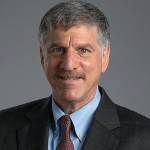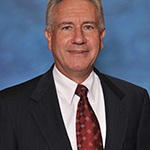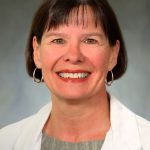
Dr. Block
Richard Furie, MD, chief of rheumatology at Northwell Health in Great Neck, N.Y., took over as AMPC chair in 2004 and served for three years. Seeing the difficulty of planning an ever-expanding meeting and the need for innovation, Dr. Furie convinced the ACR president at the time to add a pre-meeting planning meeting to help streamline the planning session in January.
In 1999, the meeting had grown to around 9,000 attendees, which was largely due to the approval of the first biologics for rheumatoid arthritis and the increased focus on clinical research generated by industry-sponsored trials. “The prediction was that the meeting attendance was going to grow even more in the ensuing years,” says Dr. Furie. “Therefore, accommodations for greater participation by researchers and clinicians was necessary.”
Under Dr. Furie’s leadership and through the leadership of subsequent chairs, Brian Mandell, MD, PhD, professor and chairman, Department of Academic Medicine, Rheumatology and Immunologic Disease at the Cleveland Clinic (2007 AMPC chair), and Joel Block, MD, the Willard L. Wood, MD, Professor and director of the Division of Rheumatology at Rush University, Chicago (2008–2011 AMPC chair), the meeting grew to include a number of innovations that remain to this day, among them: The Great Debate, Year in Review, Thieves Market, Curbside Consults, Knowledge Bowl, expanded workshop offerings, Poster Tours and an educator track.

Dr. Oddis
“The three of us together over that period completely revolutionized the structure of the meeting,” says Dr. Block, emphasizing the credit due to Dr. Furie for spurring on the changes and pushing for updating the meeting.
According to Dr. Mandell, the shared philosophies among the three of them centered on the need to continually update the meeting by introducing something new each year. Part of the need to innovate was to accommodate the tension among the different constituencies of the College, he says, and to make the meeting maximally meaningful to clinical researchers, basic science researchers and clinicians. Content added for another constituency, educators, was emphasized during this period.
The ability to appeal to all these constituents is one reason the annual meeting is important, according to Dr. Mandell. “The annual meeting is a unique placeholder in rheumatology education,” he says.
Dawn of the Digital Age
One of the key changes Dr. Furie made during his tenure was to move the annual meeting into the digital age. “Rich [Furie] was very savvy with computers, and his major contribution was to use computerized spreadsheets, for example, to organize the meeting as opposed to using large pads of paper attached to easels [to map out the sessions] and posting these on the wall with masking tape,” explains Dr. Kay.
One basic change Dr. Furie made was to make a computerized record of the number of people who attended each session during the meeting to use for planning the next meeting. This was not done prior to his tenure and left the planning committee blind to, for example, what rooms to assign for particular sessions based on the number of expected attendees.
Using computer technology to help plan the meeting also facilitated organization of the multiple sessions the meeting now had to accommodate. “The volume had gone up three- or fourfold, so we needed more sessions that were hard to increase without having competition,” says Dr. Furie, who made the then unheard-of change to allow scientific sessions to run concurrent to the plenary sessions and poster presentations.

